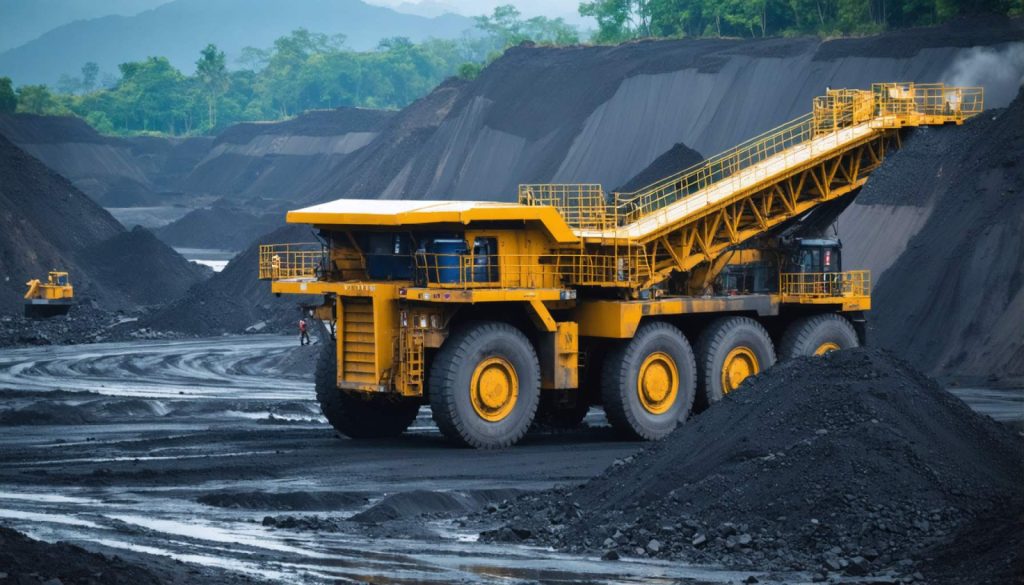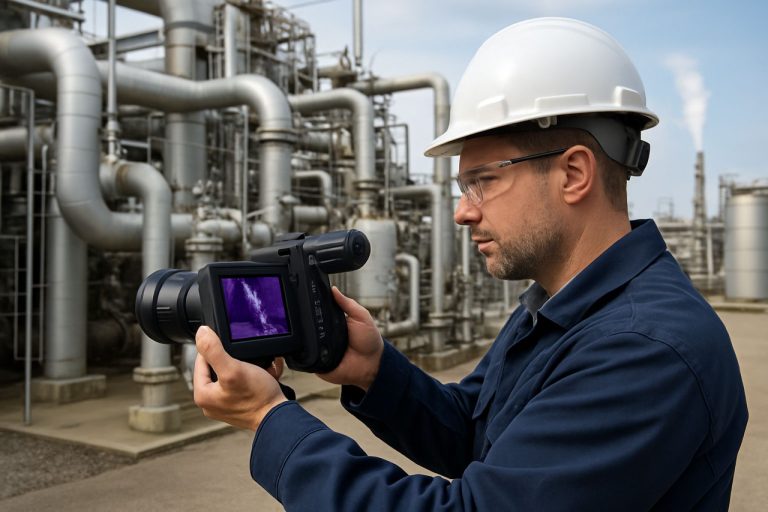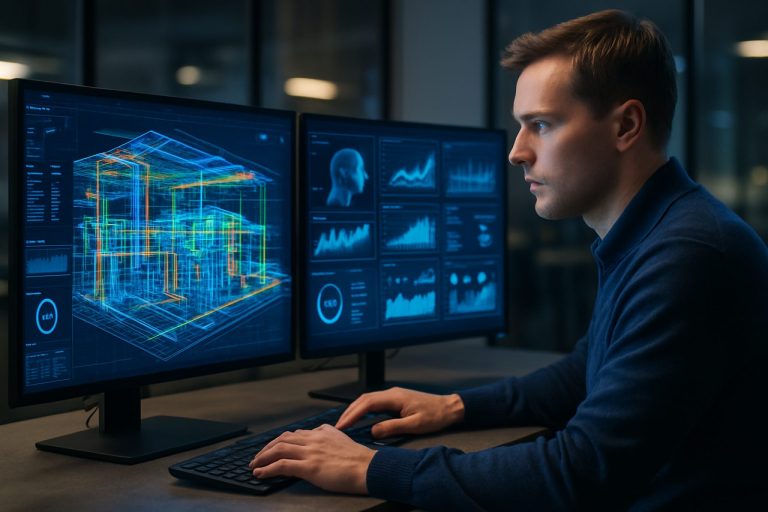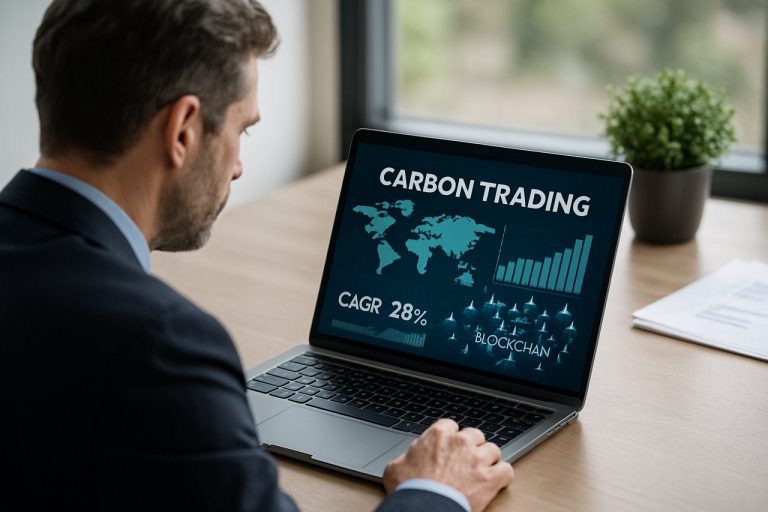
- “Indonesia AI Day for the Mining Industry” marked a pivotal moment for technological advancement in mining, hosted by Indosat Ooredoo Hutchison.
- Key focus: the integration of Artificial Intelligence (AI) and Internet of Things (IoT) to enhance operational efficiency, safety, and sustainability.
- Industry leaders and policymakers discussed AI’s role in boosting competitiveness and spearheading eco-friendly energy transitions.
- Cross-sector collaboration is essential, with a call for a robust digital ecosystem and skilled workforce.
- The transformation aims to stabilize supply chains, impacting retail and consumer sectors significantly.
- The event highlighted a shift towards a sustainable mining future and potential industrial renaissance in Indonesia.
A tide of transformation sweeps across Indonesia, as its vast and storied mining landscape encounters the future head-on. Indosat Ooredoo Hutchison, a beacon of technological innovation, has taken a bold leap by hosting the groundbreaking “Indonesia AI Day for the Mining Industry,” illuminating a new path that intertwines digital prowess with earth’s minerals.
In this vibrant symposium, industry leaders, tech savants, and policymakers converged under the theme “Navigating the Future of Indonesia’s Mining Industry.” The very air vibrated with discussions that painted vivid possibilities for the sector. Here, the spotlight was firmly on Artificial Intelligence and the Internet of Things (IoT)—technologies poised to redefine what mining means in the 21st century. No longer confined to dusty operations of the past, the narrative of mining is on the cusp of a reinvention that promises breathtaking advancements in operational efficiency and safety, alongside a pivot towards sustainability and competitive global standards.
Amidst this forward-thinking forum, the voice of Rosan Roeslani, Minister of Investment and Downstreaming, resonated with clarity. He championed the pivotal role of AI in transforming not just technology but fundamentally enhancing industry competitiveness. He painted a future where AI is the linchpin in the transition to eco-friendly energy—a future embraced by supportive policies and enriched by a well-crafted development of human capital.
Beyond the industrial mechanics, this dialogue fostered a sweeping vision for economic resilience. It sparked collaborative zeal among diverse stakeholders, fashioning a cohesive strategy for digital evolution within the mining sphere. This synergy is crucial, as Indosat Ooredoo Hutchison’s President Director, Vikram Sinha, laid out a visionary blueprint—the company’s transformation into a pioneering AI tech entity that will carve out a technologically advanced mining landscape.
As the event drew to a close, a clarion call for cross-sector collaboration resounded, advocating for a robust digital ecosystem fortified with cutting-edge technology and a skilled digital workforce. However, the ripples of this initiative extend beyond the mining fields.
The sweeping digital transformation envisioned by IOH reaches into the heart of retail and consumer sectors. By engineering enhanced efficiency and output in mining, the initiative promises to stabilize material supply chains, affecting product availability and pricing for everyday consumers. This paradigm shift in mining could well rock the foundations of consumer expectations, setting newfound standards in operational excellence and environmental responsibility across industries.
In the golden aftermath of this inaugural event, Indonesia stands on the brink of an industrial renaissance, where old meets new, and mining becomes not just an extractive pursuit but part of a sustainable, progressive future. The narrative unfolds, not just an industry evolution but a call to embrace change.
How AI and IoT are Revolutionizing Indonesia’s Mining Industry
AI and IoT: Pillars of Modern Mining
Indonesia’s mining industry is undergoing a profound transformation, driven by Artificial Intelligence (AI) and the Internet of Things (IoT). These technologies promise to redefine operational efficiencies, boost safety, and promote sustainability, thus aligning the industry with international standards.
Real-World Use Cases
AI-driven analytics are enhancing predictive maintenance in mining equipment, significantly reducing downtime and operational costs. IoT sensors, on the other hand, provide real-time data on equipment health, environmental conditions, and worker safety, allowing for proactive measures to prevent accidents.
Industry Trends and Market Forecast
By 2025, it is expected that the global mining AI market will grow significantly, with key players investing heavily in digital transformation. Indonesia’s proactive stance in embracing AI and IoT positions it well to be a leader in sustainable mining practices in Southeast Asia.
Key Features and Specs
– AI-Supported Automation: Automation of repetitive tasks and data analysis can improve decision-making processes.
– IoT-Bolstered Safety Protocols: Advanced sensors monitor the environment for potential hazards, minimizing risks to personnel.
– Cloud Connectivity: Facilitates seamless integration of data from various sources, optimizing resource management and operational logistics.
Addressing Common Questions
How does AI improve mining safety?
AI algorithms can predict equipment failures and hazardous environmental conditions, significantly reducing the likelihood of accidents.
Can small mining companies afford AI?
Yes, scalable AI solutions are available that cater to the needs and budgets of smaller mining operations.
Pros and Cons
Pros:
– Increased Efficiency: Automation reduces manual error and increases throughput.
– Enhanced Safety: Real-time monitoring and predictive analytics protect workers and the environment.
– Sustainability: More efficient resource usage reduces waste and environmental impact.
Cons:
– Initial Costs: The upfront investment for digital infrastructure can be significant.
– Skilled Workforce Requirement: The shift to digital operations requires significant upskilling of current employees.
Controversies and Limitations
While the benefits are clear, some stakeholders express concerns about job displacement due to automation. This necessitates a balanced approach, ensuring that human capital development keeps pace with technological advancements.
Actionable Recommendations
1. Invest in Training: Allocate resources towards training programs to equip workers with digital skills.
2. Pilot Programs: Test AI and IoT solutions in small-scale projects before full implementation.
3. Collaborate Across Sectors: Forge partnerships with tech companies to customize solutions to specific needs.
The Road Ahead
Indonesia’s mining sector stands on the precipice of a digital transformation that promises increased efficiency and sustainability. Embracing AI and IoT not only sets the stage for economic resilience but also invites a paradigm shift in consumer expectations, enhancing product availability and quality.
For further insights on sustainable advancements and digital trends, visit reliable sources such as Bain & Company and McKinsey & Company.



